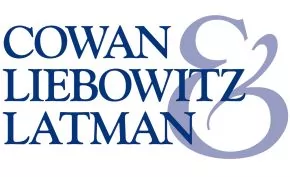Many times, two marks have been found likely to be confused despite (1) the addition of a second word to the later mark (found not to overcome that mark's use of the identical or similar word used by the prior mark), or (2) different design features (which were found to be dominated by the identical or similar word portions of the marks).
However, a different result was upheld by the U.S. Court of Appeals for the Federal Circuit ("CAFC") in affirming a decision by the Trademark Trial and Appeal Board ("TTAB") that the marks-in-issue were not likely to cause confusion.

Trek Bicycle Corporation uses its famous registered mark TREK (in plain lettering and with a shield design) for bicycles and bicycle accessories. Trek also uses its mark for bags in Class 18 and for clothing in Class 25.
Trek opposed Christina Isaacs' application to register RANGER TREK (in plain lettering and with a different shield design) for, among other things, bags in Class 18 and clothing in Class 25, alleging a likelihood of confusion with its TREK mark.
The TTAB dismissed the opposition. It found that the differences between the marks were sufficient to avoid a likelihood of confusion despite the identical goods and trade channels and the fame of Trek's marks for bicycles and accessories.
Trek appealed to the CAFC, which affirmed that decision, finding that the TTAB had substantial factual evidence for its decision and had reasonably weighed the legal factors.
Comparison of the Marks
Because RANGER was the first word in the applicant's RANGER TREK marks, the TTAB had reasonably found that "RANGER" was the dominant portion.
The TTAB also had found that the marks differed in overall commercial impression because "TREK" referenced a journey or hike (and Trek's evidence that its bicycles were designed for trail-use did not apply to apparel) whereas RANGER TREK evoked a specific type of mission.
Lastly, the respective shield designs differed. There is no general rule that the word portion of a mark is dominant over a design portion, and the applicant's design (including a U.S. Map above two cartoon characters wearing park ranger hats) amplified the RANGER connotation of the applicant's mark.
Fame and Commercial Strength
Fame, for likelihood of confusion purposes, is a matter of degree depending on relevant factors that include sales, advertising, length of use of the mark, market share, brand awareness, licensing, and variety of goods bearing the mark.
The commercial strength (marketplace value) of Trek's mark made it famous for bicycles but the evidence did not sufficiently show that this applied to clothing and bags.
The conceptual strength (distinctiveness) of Trek's mark was found to be weak based on dictionary definitions and third-party registrations which showed that TREK was somewhat suggestive of the identified goods.
Other Facts
During the prosecution of one of Trek's applications, Trek had successfully argued that TREK could coexist with five previously registered marks containing that word. This was evidence that TREK and RANGER TREK also could coexist without a likelihood of confusion.
Conclusion
The CAFC saw no error in the TTAB's findings that the marks noticeably differed in appearance, sound, connotation, and commercial impression. Accordingly, it affirmed the TTAB's decision dismissing Trek's opposition.
Trek Bicycle Corporation v. Christina Isaacs, Case No. 2022-1434 (Fed. Cir. November 15, 2023).
Author's Note:
If you want to adopt a word mark identical or similar to an existing mark, it may be possible to avoid a likelihood of confusion finding if some or all the following facts exist:
- The prior mark is suggestive of the goods-in-issue, so the mark lacks commercial strength in the marketplace as to those goods.
- The prior mark coexists with similar marks, so the mark lacks the conceptual strength of distinctiveness.
- In prosecuting an application to register the prior mark, the registrant had argued that its mark could coexist with other marks.
- The later mark features the addition of a first word.
- The later mark as a whole evokes a different connotation from the prior mark.
- The design features of the respective marks are sufficiently different from each other.
Of course, each case depends on the factual evidence presented, so it can be difficult to predict the outcome when clearing a proposed mark sharing features of an existing mark. It may be desirable to avoid the cost and disruption of a dispute by adopting a mark with a different word portion and/or a distinctive design feature.
The content of this article is intended to provide a general guide to the subject matter. Specialist advice should be sought about your specific circumstances.

